New data that shows household lending remains soft, makes the case for embedded reforms that can boost housing markets and reignite confidence among homebuyers according to the Urban Development Institute of Australia (UDIA).
The Australian Bureau of Statistics figures on new lending to households showed mortgage lending fell 1.3 percent in May 2019, in seasonally adjusted terms.
“The timing of the election cast a long, dark shadow over lending decisions in May,” says Connie Kirk, UDIA National Executive Director.
“We now have the comfort of seeing interest rates cut, more sensible lending rules applied by APRA and certainty over the retention of negative gearing and capital gains tax arrangements.
“They open the door to a turnaround in housing markets and a rebound in lending, building approvals and sales volumes.
“All three key indicators, however, remain well back from the peak of two or three years ago and will take time to feed into investment, construction and jobs that can boost economic growth.
“The construction pipeline is particularly thin, so we need to match the actions of regulators with good policy from government.
“Efforts to help close the deposit gap and a pending review of environmental laws are positives, but they will need to be delivered in a way that results in meaningful benefits to homebuyers and developers.
“We also need to see the states act on inefficiencies and blockages in planning systems, as well as excessive developer taxes and charges that get baked into the price paid by homebuyers,” says Connie Kirk.
UDIA’s National Policy Priorities 2019 ‘Building a Better Australia’ outlines further recommendations for improving housing supply and ownership through an expanded mandate for the National Housing Finance and Investment Corporation, with the aim of reforming taxes and charges on new housing. The National Policy Priorities can be accessed at www.udiapriorities.com.au

